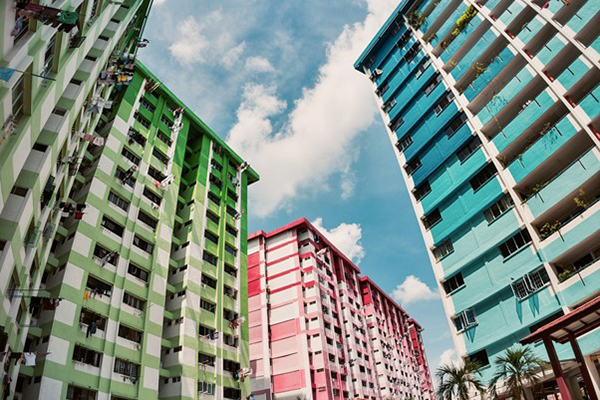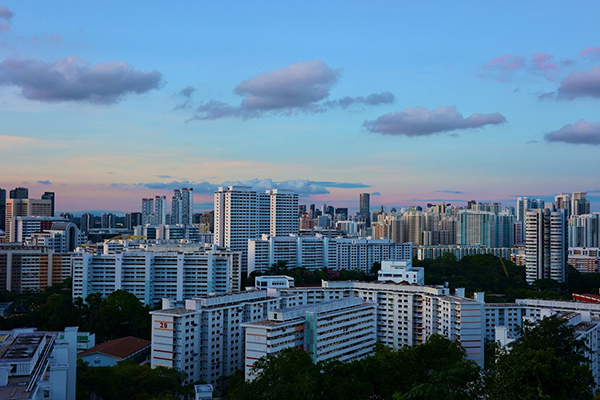Resilient Infrastructure and Our Efforts Towards Achieving It
Did you know that by 2050, the urban population is expected to more than double its current size, and account for almost 70% of the global population1? This underscores the importance of ensuring the resiliency of our high-rise, high-density cities, as they undergo the test of time and pressures exerted by climate change and ageing workforce.
“Resilience” in infrastructure, is the ability to reduce the magnitude
and/or duration of disruptive events. Resilient infrastructure should be able to
anticipate, absorb, adapt to, and/or rapidly recover from a potentially disruptive
event2. To effectively design and deliver resiliency in buildings, some of the key existing efforts are:
Capitalising on Smart Sensing Technologies
In Singapore, as technology reshapes the way we work and live, it is important
for the Government to play an active role in harnessing technology to improve
the quality of life for Singaporeans. One example is the development of the HDB Smart Hub,
which overlooks the collection and integration of various sources of information in
HDB estates to support HDB’s planning and design processes, as well as their sustainability
and community development efforts.
The development and deployment of more advanced non-intrusive sensors for key residential
services such as lifts and our building structures will drive the more pervasive use of data
and build up advanced analytics capabilities to effectively capitalise on them to improve our
Built Environment. With the use of Artificial Intelligence and edge computing, more accurate
predictions could be made on our current systems, enabling us to move towards proactive
maintenance and minimise the occurrence of disruptions due to service failures.

HDB Smart Hub being used to analyze data collected from HDB estates
(Image: HDB)
In terms of commercial district management, another example is the Open Digital Platform (ODP),
which will be deployed at Punggol Digital District (PDD) to enable centralised and more efficient
district management. The ODP and PDD represent an opportunity to design and build a smart district
from scratch, and the lessons learnt will inform the development of future new towns in Singapore,
as well as the redevelopment of existing ones. Given the “plug and play” digital
architecture of the ODP, which relies on the Singapore Government Tech Stack developed by GovTech,
businesses will also be able to tap on the ODP and its district-level data to rapidly prototype and
deploy technology solutions in a real-world setting, translating to cost savings and greater
operational efficiency for businesses.
Leveraging on Robotics and Automation
To enhance productivity and shift the maintenance and inspection of our key infrastructure
away from the current reliance on manual labour, agencies have been embarking on research
with companies and research institutes. This includes developing BE task-specific robots for
(i) quality inspection and spray painting, (ii) façade inspection and (iii) tree inspections.
And more recently, HDB embarked on a joint study with A*STAR, involving the development of drone
and robotic systems for scanning and mapping of construction environments to develop up-to-date
as-built 3D models which would show an exact rendering of the project to support future inspection
and maintenance.

Drones could be used for tasks like building façade and tree inspection
(Image: Unsplash)
Developing Advanced Materials for Enhanced Durability and Resiliency
Another key existing effort is the development of more resilient materials and reinforcement
for existing infrastructure. This involves strengthening brown field infrastructure and assets
via reinforcement methods and ensuring that future infrastructure and buildings use highly resistant
materials and engineering.
For example, under the Cities of Tomorrow R&D Programme, research grant calls have been
put out to (i) develop durable, less-intrusive and cost effective repair materials as well as
(ii) establish the change in material service life for critical common façade materials used
on building façade in Singapore under the effects of climate change. This study would also
formulate appropriate adaptation measures and strategies to ensure the safety and resilience of
our building facades.
If you have any ideas related to our focus areas on smart sensing technologies, robotics/automation,
and advanced materials, do drop us a comment in the discussion forum below, or send an email to
urban_sustainability@mnd.gov.sg. We will be glad to hear
from you and explore collaboration opportunities together!

R&D efforts will allow better maintenance of HDB building facades
(Image: Pixabay)
Pushing the Boundaries in Infrastructure Resilience
The preceding examples offer a glimpse to some of our existing efforts to leverage R&D and technology to enhance the resiliency of our Built Environment. In pushing the next frontiers of Built Environment resilience, Professor of Engineering Systems, University College of London and Chief Scientist & Engineer of Building Research Establishment as well as Mr Richard Kuppusamy, Head of Lendlease Digital Asia & Head of Digital Engineering Lendlease, shared with us their thoughts on the global trends and their insights at the Urban Sustainability e-Symposia Resilience Webinar on Smart Cities: Adapting to a Disrupted World.
Some salient points underpinning Prof Watson’s sharing was the need to adopt a complex systems thinking in approaching resiliency in cities. This includes key considerations such as the intricate interdependencies and cause and effect relationships within urban systems. Resilient urban systems are an amalgamation of both technical and social capabilities and resources, and data integration in cities through the development and modelling in digital twins is a valuable tool that can help unearth new relationships and insights. With the emergence of promising IoT applications and edge technologies that are able to make use of data and support distributed decision, some key research questions and challenges include:
- Establishment of common standards and methodologies for reviewing the source and quality of sensing data
- Live data management and fusion with Digital Twins
- Enhancement of information quality from sparse sensors
- Achieving user and societal trust in the delegation of decision making to AI and Machine Learning analytics
- Protecting privacy and security of individuals and critical national infrastructure

e-Symposia webinar on “Smart Cities: Adapting to a Disrupted World” held on 23rd April 2021
(Image: HDB)
Mr Kuppusamy shared on the concept of Autonomous Buildings, which could positively disrupt every aspect of the traditional property lifecycle, unlocking efficiencies and deliver better outcomes through a continuous feedback loop of rich data made available by digital infrastructure. Besides improving the hardware, consideration of the user experience is critical in improving customer experience. Echoing Prof Watson, Mr Richard Kuppusamy emphasised that the softer aspects in terms of regulatory/policy framework, data standards and IoT security will need to grow in tandem for the hardware developed to be practically adopted. One of the keys to “future-proof” smart buildings is to make sure that the data are properly stored and structured with interoperability in mind to facilitate progressive hardware and software upgrades.
Share with us your thoughts on Prof Watson and Mr Kuppusamy’s presentations by dropping us a comment below! If you are working on any projects/ideas related to infrastructure resilience which might have relevance to Singapore, do link up with us too and we will be glad to learn more from you.
Working Together to Build Infrastructure Resilience
To further enhance the resiliency of our buildings and infrastructure, we are always on a constant look out for new solutions that can transform our Built Environment. Do keep a look out for our research grants and challenge statements under the Cities of Tomorrow R&D Programme, Cool Ideas Enterprise or Built Environment Accelerate to Market Programme and share your ideas with us.
Alternatively, if you have an innovative solution to testbed, simply apply to the Built Environment Living Lab Framework to gain access to living laboratories and receive assistance to ensure smooth deployment of the proposals.
For any other ideas/suggestions or queries that you may have, feel free to drop us an email at info@urbansustainability.sg. We will be glad to help link you up to the appropriate avenue to provide support for your innovation needs.
Together, we can work together to achieve a more resilient Built Environment.

Building Singapore’s infrastructure resiliency together
(Image: Unsplash)
[1] These statistics are reported by the Worldbank: https://www.worldbank.org/en/topic/urbandevelopment/overview
[2] As defined by the National Infrastructure Advisory Council, United States: https://www.dhs.gov/xlibrary/assets/niac/niac-a-framework-for-establishing-critical-infrastructure-resilience-goals-2010-10-19.pdf
For further enquiries, please contact us here.